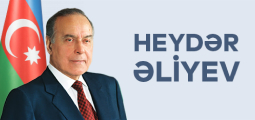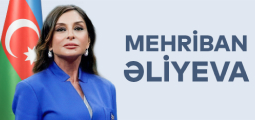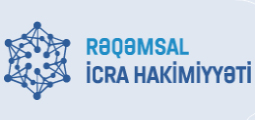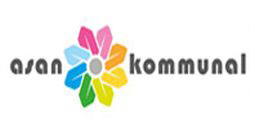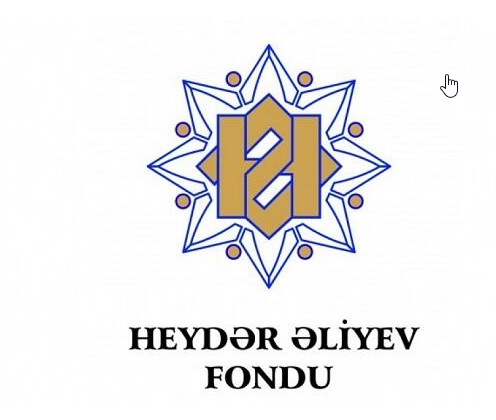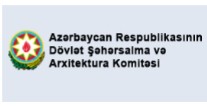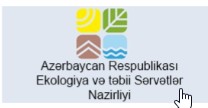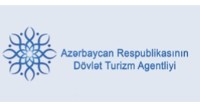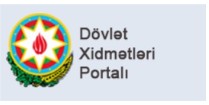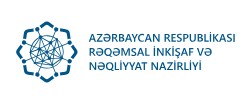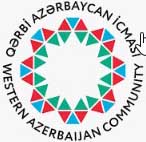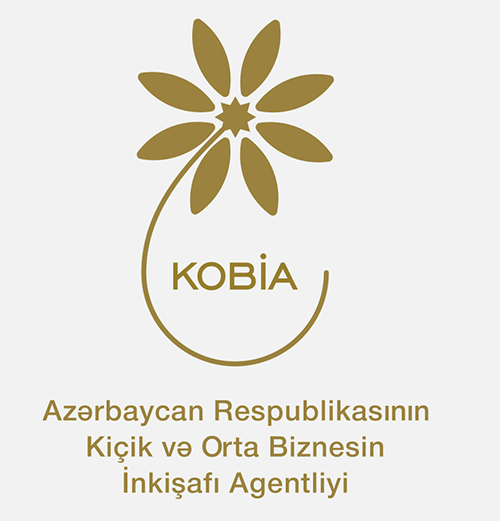Azerbaijan
Karabakh
The Nagorno Karabakh conflict became as one of the most tragic conflicts in the history of XX century and affected the destiny of millions. This conflict provoked in 1988 retains still its hostile status because the Armenian side believes that the conflict is the antagonistic one and runs by its own rule “either all or nothing”. Backstage-minded events which were out of the public limelight have paved the way to the open and precedent like phase of the conflict. This hidden and latent part of the story has been unfolding in long lasting activities of some Armenian public figures in the Soviet Union and the Armenian Diaspora abroad. The Armenian side has cared for years to deteriorate the hostile situation by having pondering on the ethnocratic nature of its plot. The ethnocratism has been intended to enable the realization of the Armenian goals at the expense of other peoples. It aimed the following irredentist idea – to attach the Nagorno Karabakh Autonomous Oblast (established in 1923) of the Azerbaijani Soviet Socialist Republic to the Armenian Soviet Socialist Republic. First patterns of the irredentist idea (so-called “miatsum”) formed for many years have got its shape during mass rallies in Yerevan in Autumn 1987 where the public demands to subordinate NKAO (Nagorno Karabakh Autonomous Oblast) to the Armenian Soviet Socialist Republic have been explicitly announced. In this light, the conflict has gradually passed to the phase of incidents. The process had some inner dynamics: it was known by the velocity of events which have logically led to the bloodbath, the tragedy for many people who were odd to the idea of the territorial expansion.
The activities of the Armenian ethnocrats have been supported by A.Aganbekyan, the academician in his scandalous interview given to L’Humanite newspaper in November 1987. It became the ominous sign which demonstrated that some part of the Soviet elite of Armenian origin is openly ignoring the official norms of peoples’ coexistence in the Soviet Union. While “Ochag” book written by the ethnocrat Z.Balayan and published in Armenian in 1985 in both Armenian and Russian languages was a mere monumental detail deplored by the society, Aganbekyan’s statement signaled an open passage to the systematic actions and declarations.
In November 1987, the conflict gets the massive character: the campaign to oust Azerbaijanis from the Kaphan district of the Azerbaijani Soviet Socialist Republic is being launched. For the first time since 1920 in South Caucasus, innocent people are put on sufferings due to their ethnic background. In the end of January 1988, no any single Azerbaijan has been left in Kaphan region. In November – December 1988, the same destiny awaited also other Azerbaijanis living in other regions of Armenia. In this regard, the massive exodus of people in large numbers is starting in 1988-1990 with the exact same mutual direction – Azerbaijanis are leaving for Azerbaijan and Armenians are heading back to Armenia. The ethnically colored panorama, which could allow in the past to talk about the mutual influence on the living style and culture, is drastically fading out.
First picketing on Karabakh issue has been organized in NKAO’s oblast Center in February 13, 1988. Starting from February 16 till March 2, 1988, public rallies are being held in NKAO. The reply came immediately – the public picketing is held in Baku on February 19. The idea to struggle is propelled extensively in both Azerbaijani and Armenian societies by creating environment to sanction the actions of “the front type” persons. This chain called as the politically inexperienced masses and leaders of public rallies is defining the shapes of the policy in 80-90 years of XX century. It is indeed in the beginning of 1988, the drastic rise of opposition gets its full swing because the Armenian ethnocrats are succeeding in replacing the social discontent by the nationalist one and to spearhead the public opinion towards illusions and non-tolerance.
In February 20, 1988, the Oblast Soviet of the People’s Deputies of NKAO – regarded as the stronghold of ethnocrats and criminals – has voted for its attachment to Armenia. The special public structure called “The Committee for Reunification of NKAO with the Armenian Soviet Socialist Republic” and destined to tear down the State integrity of the Union’s Republic came to light on March 2. In March 5, it got registered under the name of “Groong”. The irredentist nature of the conflict has been reflected in the establishment of “Karabakh” Committee in Yerevan. In February 21, 1988, the Central Committee of the Communist Party of the Soviet Union takes the decision on “The Events in Nagorno Karabakh”, which qualifies the decree of the Oblast’s Soviet as the action “provoked by the nationalistic elements”. Moscow is adopting another decree “On Measures to speed up the Social and Economic Development of the Nagorno Karabakh Autonomous Oblast of the Azerbaijani Soviet Socialist Republic in 1988 -1995” on March 24, 1988.
In June 14, 1988, the Supreme Soviet of Armenia gives “its consent to include” NKAO in the Armenian Soviet Socialist Republic. Immediately, the Supreme Soviet of Azerbaijan takes the opposite decision on June 17, 1988: NKAO remains within the Republic. The Presidium of the Supreme Soviet of USSR adopts the logical decision on the impossibility of changing the national and territorial compositions of the Azerbaijani SSR and the Armenian SSR on July 18, 1988 taking into account the destructive character of any other step. In this case, the Supreme Soviet of USSR is guided by (the Article 78) of the Soviet Constitution which stipulates that “the territory of the Union’s Republic cannot be changed without its own consent”. During this pre-war phase of the conflict and subsequently, the moral truth was on the Azerbaijani side which defended the status quo – the administrative territorial composition which did not impede at all the comprehensive development of the Azerbaijani and Armenian peoples. It has to be underlined that main indicators of the NKAO’s social development have dominated the average Republic level of the Azerbaijani SSR and the Armenian SSR.
The Azerbaijani political elite based its position on the protectionist and State interests, but its human potential was not adequate to the complexity of the situation. The absence of Heydar Aliyev, the statesman who had the experience in ruling the multinational society, had a huge and direct impact of the conflict unfolding and its subsequent phases.
As the overall weakening of the State machine of USSR became faster, all measures destined to calm down the Azerbaijani and the Armenian communities in NKAO were doomed to failure. In this context, the activities of the Committee of the Special Administration (CSA) (existed from January 12 to November 28, 1989) became also ineffective. The situation was further exacerbated by still going on Cold War between USSR and USA. The US Senate passed the resolution entitled “the US assistance in peaceful regulation of the Nagorno Karabakh dispute at the basis of the desire of the people of the Soviet Armenia” on July 19, 1989. In November 19, 1989, the US Senate expresses its wish “to assist the fair resolution of the Nagorno Karabakh conflict in the course of bilateral talks with the Soviet Union, which would really reflect the aspirations of the people of that Oblast”. The rights advocating movement formed in USSR and in particular, “The Memorial” organization are unilaterally defending the Armenian separatists saying rightly that this choice is something more meaningful than the tacit domination.
In December 1, 1989, the Supreme Soviet of the Armenian SSR has taken the unprecedented decision “On the Reunification of the Armenian SSR and Nagorno Karabakh”. In January 9, 1990, the Supreme Soviet of Armenia has included the plan on the social and economic development of NKAO in the Republican plan for 1990. NKAO held the parliamentary elections to send its representatives to the Supreme Soviet of the Armenian SSR on May 20, 1990. This series of events have left no doubt in irredentist position of Armenia which was subsequently just masked. In May 1990, the Armenian All National Movement has won the parliamentary elections in Armenia. Ascension of separatists to power meant the only thing: to wage an aggressive war with the ideas like “reunification” and “people’s self-determination right”. In fact, the military ethnocratic circles have acceded to power in Armenia, which advocated the only forceful way of the problem resolution.
The decision “On the Reunification of the Armenian SSR and Nagorno Karabakh” taken on December 1, 1989 had very serious consequences to the relations between peoples by stirring up the cold war between Azerbaijani and Armenia, and accordingly, the rise of mass hatred towards aggressors. It leads openly to the qualitative enlargement of the zone of conflict and its general expansion. After known January events of 1990 in Baku, the Kremlin profile and President Gorbachev’s image became negative indices in the country.
Heydar Aliyev’s revealing speech made in Moscow on January 20 has ensured the combination of sound intellectual grounds for the society which were directed to sort out from the crisis of the Azerbaijani Statehood. January Events in Baku have been marked by the passage of the Azerbaijani elite to a new political and philosophical position – the deteriorating conflict became the catalyst in formatting new program goals. The failure of the authorities of the Azerbaijani SSR in January 1990 has signaled the inadequacy of the policy based upon the class internationalism in large Imperial space. A new ideological paradigm was destined to ensure the transition of Azerbaijan to the National State. But newly formed leaders of Azerbaijan were late in passing to a new policy. They have made mistakes in temporal measuring of events. Meanwhile, Heydar Aliyev was also in forced isolation. This was the man with already proved political drive who could feel the timeliness and the space. He was able to analyze the course of events before actions and understand that every of the planned step should rely upon the tough subjective will of the State.
The Republican Organizing Committee for NKAO created at the basis of the decree of the Supreme Soviet of USSR was helpless – it is well seen today – because it has been linked to the weakening possibilities of the overall Union’s system, which was objectively interested in self-survival. Nevertheless, starting from January 25, 1990, the Organizing Committee has strived in its every step the political-legal and psychological basis of NKAO by helping the population to get rid of the ethnic intolerance feelings. Its activities became definitely idle in the aftermath of the August events of 1991 which have completely discredited the all Union’s Statehood. Hypocrisy and duplicity of the Gorbachev’s policy were seen as the elements “to build” a new political reality. It was far from promising any relieving prospective to the Azerbaijani nation. In September 2, 1991, “The Nagorno Karabakh Republic” (NKR) has been declared within boundaries of NKAO and the Shaumyan region of the Azerbaijani SSR. As a reply measure, Azerbaijan has taken the decision on November 23, 1991 which repealed the autonomous status of Nagorno Karabakh. But, in November 27, 1991, the latest creature of Gorbachev – so-called “The State Council of USSR” has deemed this decision of Azerbaijan as the anti-Constitutional. In December 10, 1991, the referendum masterminded earlier was held in “NKR” to vote for the independence of the Armenian community. The Independence Declaration of the mono-ethnic “Nagorno Karabakh Republic” has been adopted on January 6, 1992. After having adopted these decisions, the Armenian separatists have provoked the transition from the cold war to the full scale military operations accompanied by the mass perishing of absolutely innocent Azerbaijanis and Armenians who became the hostages of the Yerevan aggressive aspirations.
During military campaign of 1992 and 1993, Armenia has occupied 20 percent of the Azerbaijani territory. “As an outcome of the war, more than one million of people have been subjected to the ethnic cleansing by Armenia”. Mr.Ilham Aliyev, the President of the Republic of Azerbaijan has underlined the following: “The occupation of the territory of the sovereign State with its internationally recognized boundaries – our territorial integrity is recognized by the United Nations… has been left out of due attention of the international community… All of these facts are the ever seen injustice which lasts over long years”.
In 1993, the Azerbaijani nation has personally experienced the need for building strong basis of the State, human potential in quality of professional staff worked for life and in particular, the creative minded leader. This Nation got the historic Fortune: all of this was in its hands. In order to attain this level, there was a need for the will of people which Aristotle used to call as the Entelechy – to transit from the potential into the factual.
Heydar Aliyev’s comeback on June 15, 1993 has turned a new page in the Nagorno Karabakh conflict. In 1993, Heydar Aliyev has paved the way towards a new Azerbaijani Statehood. In this context, the Nagorno Karabakh problem has been considered only through the following prism: “The Territorial integrity of Azerbaijan is not and will never be the topic of negotiations… Azerbaijan will not retreat from this position in any single step. This means that in territorial integrity of Azerbaijan … there will be no compromise”. These words are reflecting the continuation of the political course of Heydar Aliyev realized by Mr. Ilham Aliyev, the President of the Republic of Azerbaijan.
In 1993, Heydar Aliyev has factually been left in front of the very grave consequences caused by objective and subjective reasons. He concluded that the resolution of the Nagorno Karabakh problem envisages the synthetic approach and the necessary consideration of many factors in internal and external policies. In particular, it meant the beginning of the formation of the regular mighty army, the creation of the stable authorities, the restoration and reformation of economy, the signature of oil contract and definitely, the consolidation of the nation. Heydar Aliyev used to say: “I needed two and a half years to establish order”. In 1993-1994, Heydar Aliyev has been acknowledging that he used “to spend 80 percent of his long working day” for solving this problem.
In May 5, 1994, Bishkek Protocol on ceasefire has been signed. In the result of the Armenian aggression, the following seven regions have fallen under the occupation – Kelbajar, Lachin, Kubatly, Zanghilan, Agdam and Fizuli. Almost one million of people have become refugees and internally displaced persons.
The escalation of the armed conflict in 1993 has brought the UN Security Council to the decision to adopt 4 resolutions in 1993: April 30, July 29, October 14 and November 12, 1993. These resolutions confirm the territorial integrity of the Republic of Azerbaijan and use the following wording – “The Nagorno Karabakh region of the Republic of Azerbaijan” which is incorporated into the texts of UN General Assembly annual resolutions “On Co-operation between the Organization of the United Nations and the Organization for the Security and the Co-operation in Europe”.
The decisions taken in OSCE framework are based upon the UN Security Council resolutions, the legal-normative basis and the mechanism of the negotiation process. Already, in 1992, Foreign Ministers of CSCE have expressed their concern about the extending armed conflict in Nagorno Karabakh at the additional Helsinki meeting and their desire to convene the special conference in Minsk. During CSCE Budapest Summit held in 1994, the adherence to the relevant resolutions of the UN Security Council has been confirmed by the participants. They have also decided to pass to the active actions of CSCE in relation to the Nagorno Karabakh conflict. At the same time, heads of States and governments have inducted the CSCE Chairman-in-office to nominate the co-chairmen of the Minsk Conference in order to forge the common and consistent basis for talks as well as to ensure the full coordination of all mediation and negotiation activities. Heads of States and governments have also expressed their political readiness to allocate multinational forces of CSCE to maintain peace as both sides will reach the political agreement on stopping the armed conflict.
While heads of CIS States have been signing the Memorandum on Maintaining the peace and stability in the Commonwealth of Independent States in 1995, Armenian has refused to endorse 7th and 8th Items of the document which stipulate the following: “The participating States will undertake in their own territories measures to prevent any pattern of separatism, nationalism, chauvinism and fascism, and they are also committed neither to support the separatist movements in the territories on the territories of other participating States and any separatist regimes nor to extend them economic, financial, military and other assistance”.
In December 2-3, 1996, Armenia is blocking the Final Declaration in OSCE Lisbon Summit which recognizes the territorial integrity of Azerbaijan.
Mediators of OSCE Minsk Group are presenting a new plan for peaceful settlement on September 20-24, 1997. In accordance with this plan, “Nagorno Karabakh is the State and territorial entity within Azerbaijan”. In November 1998, OSCE Minsk Group proposes the idea of the so-called “common State” rejected by Azerbaijan. Final documents of OSCE Istanbul Summit held in November 1999 do not contain a direct reference to the principle of the territorial integrity of the Republic of Azerbaijan in relation to the settlement of the Nagorno Karabakh conflict.
The Armenian-Azerbaijani conflict has been also considered in the Council of Europe. In 1997, the Parliamentary Assembly of the Council of Europe has adopted the resolution “On the Conflicts in the South Caucasus” which stipulates that the political settlement of the conflict in Nagorno Karabakh must be the topic of talks taking into account, in particular, the principles of inviolability of the State borders and the large autonomy status for Nagorno Karabakh.
In April 25, 1999, the President of Azerbaijan and Armenia – Heydar Aliyev and Robert Kocharian are holding the first bilateral meeting in Washington. They meet again in Paris on January 26 and March 4-5, 2001 and later on, in Key West on April 3-7, 2001.
In 2006, OSCE Minsk Group has proposed to hold in future the referendum to define the status of Nagorno Karabakh with the condition to withdraw the Armenian troops from the Azerbaijan lands which are currently under occupation.
It should be noted that such meetings were also held between Presidents Ilham Aliyev and Robert Kocharian starting from their first talks in Geneva on December 11, 2003.
Such order of events demonstrates the radical difference either in the nature of steps made by Azerbaijan and Armenia – two States of the South Caucasus, or in their conceptual approach to the conflict resolution.
The Statehood building culture of Azerbaijan has been representing and still represents the synergy of knowledge, abilities and experience of peoples lived in Azerbaijan for centuries. The Azerbaijani political, e.g. civil nation has been forming in the course of XX century. “The State becomes richer if it is populated by many peoples because every of these peoples bring its own contribution to the world culture and civilization”. This formula of Heydar Aliyev is reflecting the quintessence nature of the modern Azerbaijani Statehood. These are the political and psychological as well as ideological-cultural origins of the policies of the modern Azerbaijani State.
The modern Republic of Azerbaijan regards the existence of a people as the result of the civil and political self-determination of the peoples in Azerbaijan. In this main sense, the problem of “the ethnic self-determination further up to the separation” within one nation is considered as the false problem. The ethnocratic nationalism used as a tool to breakdown the national States is groundless in its main argument. The ethnos within the nation-State cannot be the political-legal entity. It can enjoy only being as the cultural and historical entity. The modern nation-States are multiethnic. The State where the many ethnos communities are not united into the political nation under the common national interest and supra-ethnic ideology can exist only in critical situation, if possible. This is the general political philosophy of the Azerbaijani State that can be applied to the Nagorno Karabakh conflict.
The future of the Nagorno Karabakh conflict is not the direct continuation of the current state of affairs. It is mainly linked to the fact that the events in the diplomatic history after the signature of ceasefire are valued at the basis of the only moral criteria formulated by Mr. Ilham Aliyev, the President of the Republic of Azerbaijan: “Of course, we are happy to gain the diplomatic success… But if our lands are still under occupation, it means that all these results do not enjoy the principal importance. They will be only meaningful as the Azerbaijani lands will be liberated from the occupational forces and our fellow citizens will go back to their native homes. Our compatriots must come back to the occupied lands – territories adjacent to Nagorno Karabakh and the Nagorno Karabakh itself”.
Criteria of evaluating the diplomatic efforts are reflected in the practice and the incontestable achievements of the Azerbaijani State which are extrapolated rightly in the overall might of the country. “Our largest compromise is our commitment to the peace talks. But we have to create a new situation using these possibilities. I want to reaffirm that the strengthening of the military potential is not leading to the automatic restoration of war. This is the very last option. We have to be ready for it. Every country must be ready, including our country which is in the state of war with its occupied lands. At the same time, I am convinced that we will be able to exert a strong pressure on Armenia by using all political, economic, diplomatic and regional factors. This is already felt by anyone.” – says Mr. I.Aliyev, the President of the Republic of Azerbaijan.
The Nagorno Karabakh problem will be solved in favor of the citizens of the multinational Azerbaijan. Our country was and will be the common house of all its residing peoples.

